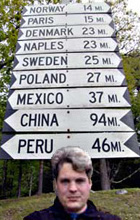EUROPE FOR FREE : CITY: SECTION :
always free
Madrid has a real dearth of totally free sights, aside from a few palaces and the like you can see from the outside. However, to make up for it, practically every major sight with the exception of the Thyssen Museum is admission-free at least one day a week (usually Wednesday or Sunday). See the SOMETIMES FREE page for details.
Plaza Mayor
Practically the only bit of historic Madrid remaining is hidden just off Calle Mayor, This lovely, car-free, arcade-lined square dates largely to the 17th century, laid out by Philip II and the architect he had build El Escorial, Juan Herrera. The most beautiful bit is the frescoed façade of the 1590 Casa Panadería, and it's hard to imagine, as you sit at a pricey outdoor cafe table, that this plaza was the prime site where heretics were burned at the stake during the Spanish Inquisition.
Daily.
Museo Taurino (Bullfighting Museum)
The history of Spain's bloody "sport" (I used to keep an open mind about such cultural pastimes until I actual attended a bullfight; it's nothing more than a few pompous guys in sequins with swords or pikes and one very confused beast who slowly bleeds to death while he tries to escape from these men who seem intent on hurting him) including a topical painting by Goya and the outfit renowned matador Manolete was wearing when he was gored to death in the ring at age 30.
Closed Mon and Sat Mar-Oct; Sat-Sun Nov-Feb.
Museo Naval
Relive the glory of the famed Spanish Armada at this naval museum tracing Spain's history on the high seas from the era when Ferdinanrd and Isabella, on a high from having driven out the last of the Moors from Spain in 1492, bankrolled one crazy Italian's trio of ships off to find an Atlantic passage to the spice and silk lands of Asia, through the Battle of Trafalgar.
Closed Mon.
Museo Tifológico
OK, this one's pretty cool. You've heard of See & Touch museums? Well, this one's Touch & Touch Some More. Take yourself out of your own head at this museum of tactile sensations designed for the blind to help them do the sightseeing normally impossible for them by running their hands over models of the world's great monuments and modern works of art (largely sculputre, and often by visually-impaired artists). There is also a historical section on accomplishments of the blind and the development of Braille. An audioguide talks you through the entire museum: try to do it entirely with your eyes closed (almost impossible; I recommend bringing a makeshift blindfold to keep your experiment honest) and you'll come out the other end with a whole new way of appreciating the world.
Closed Sun-Mon.
|
![]()

